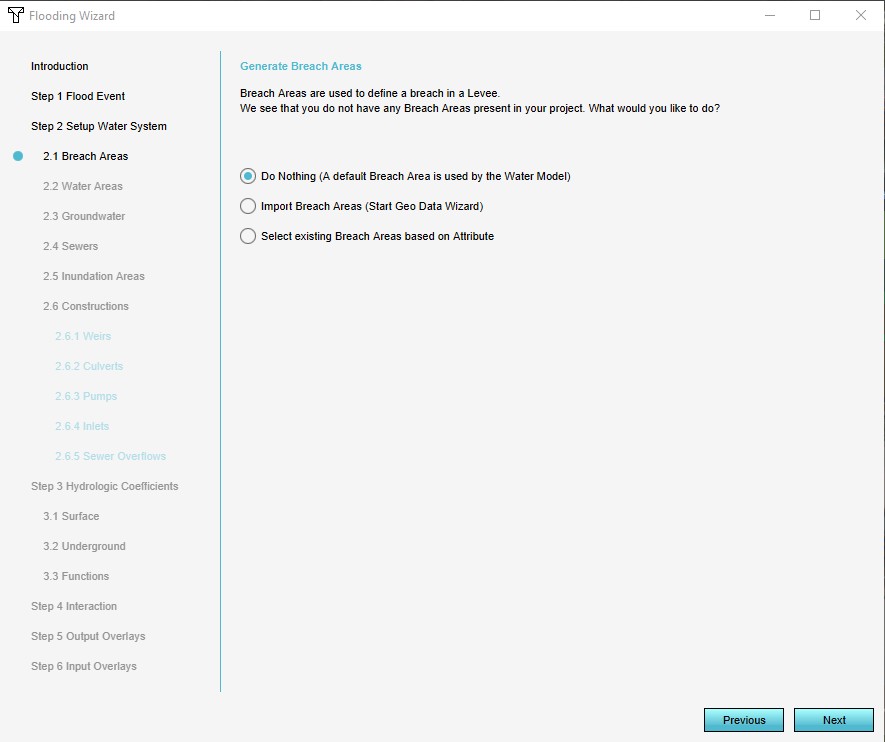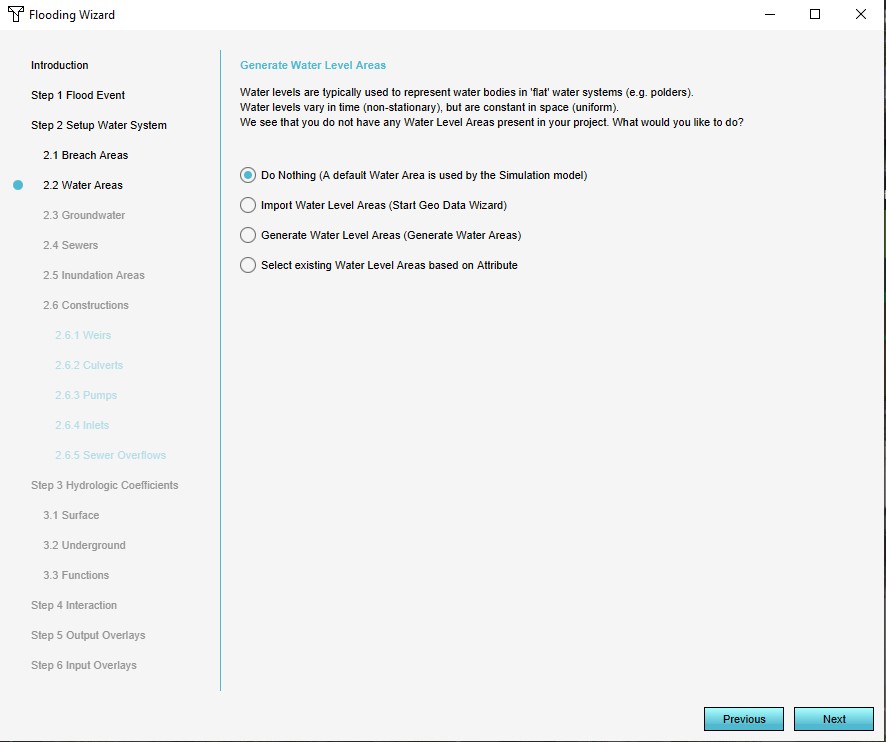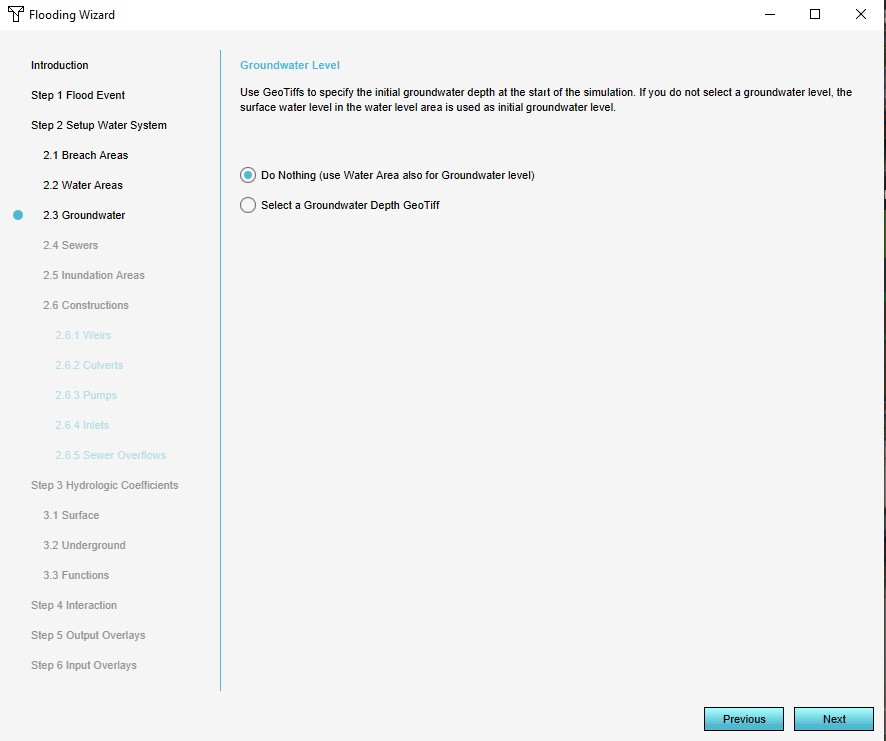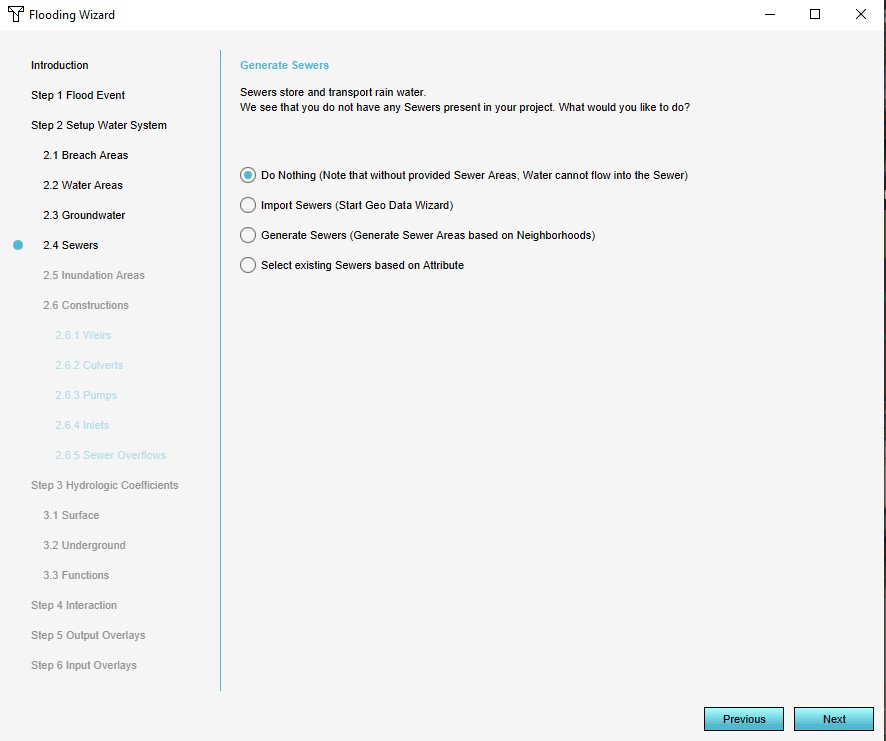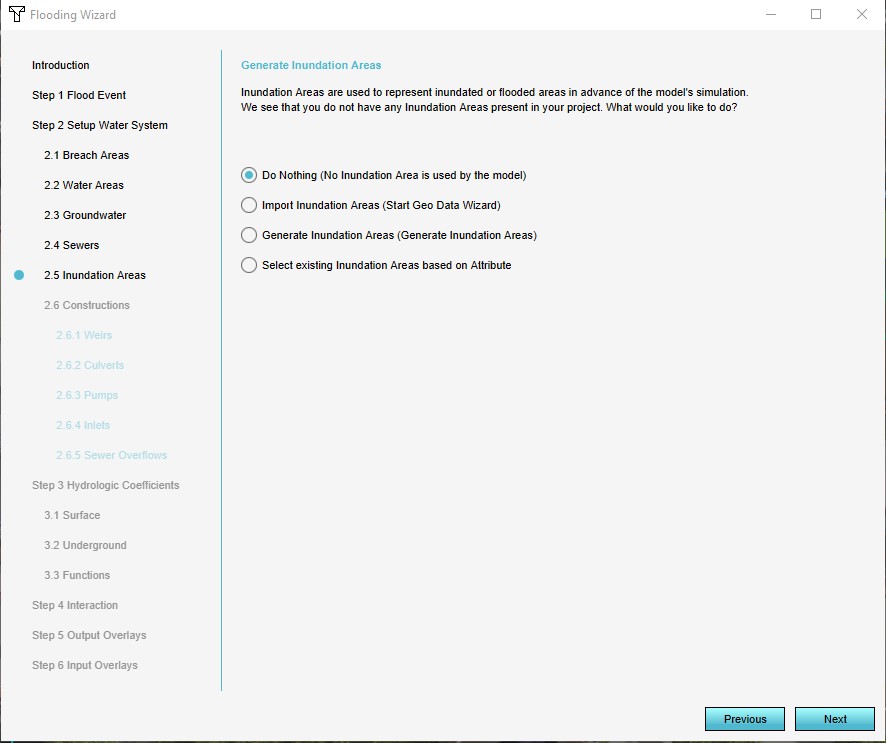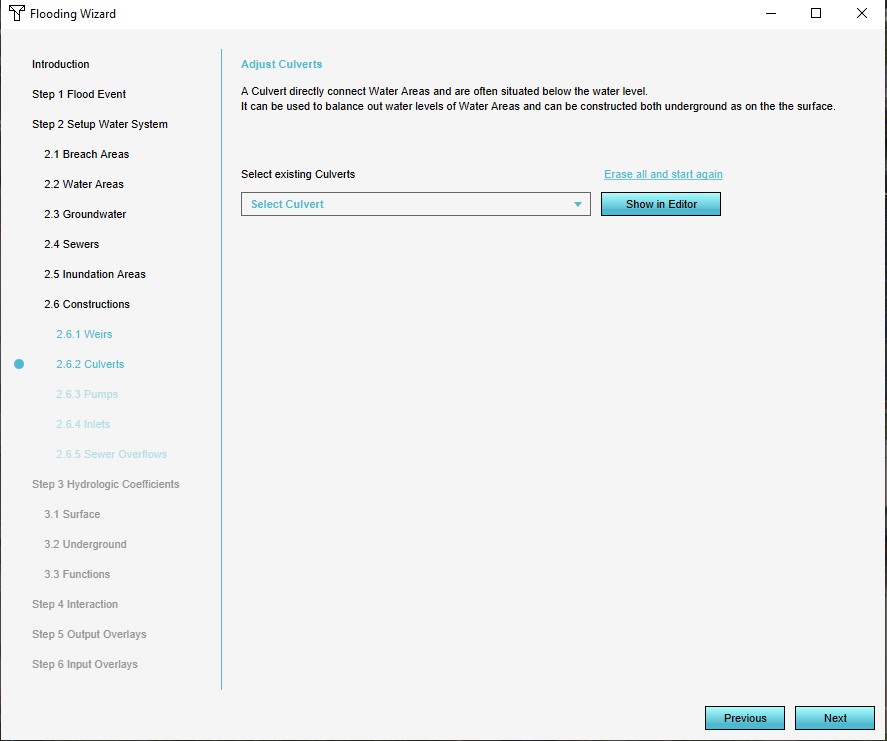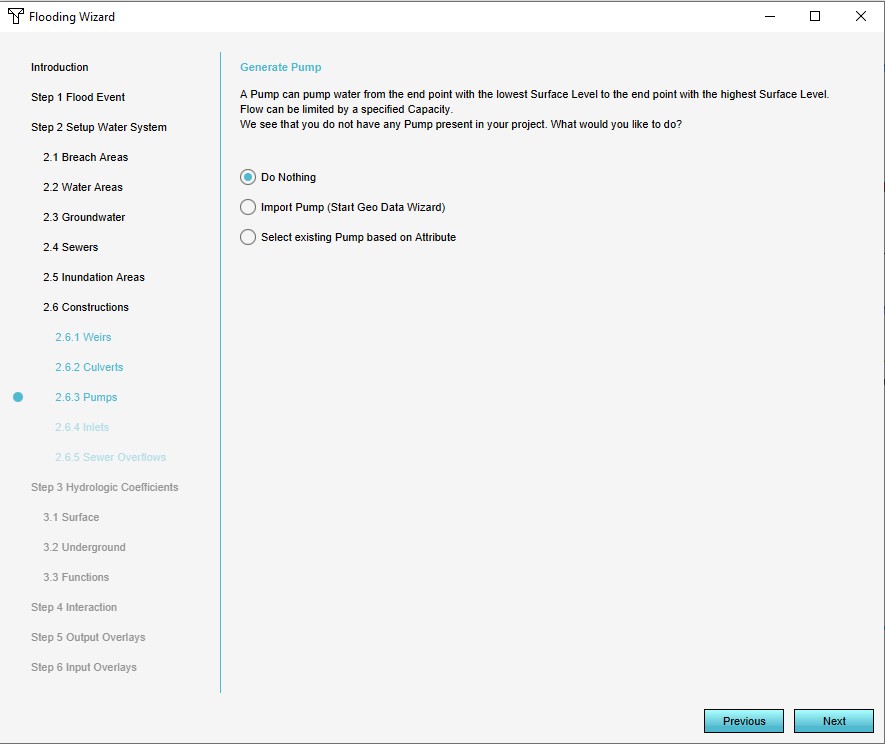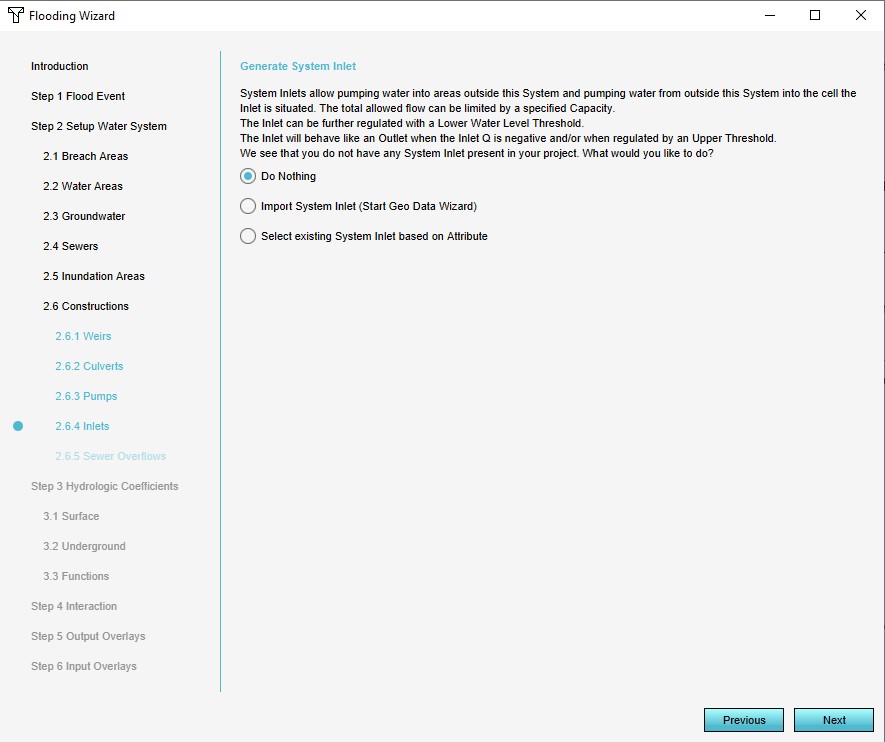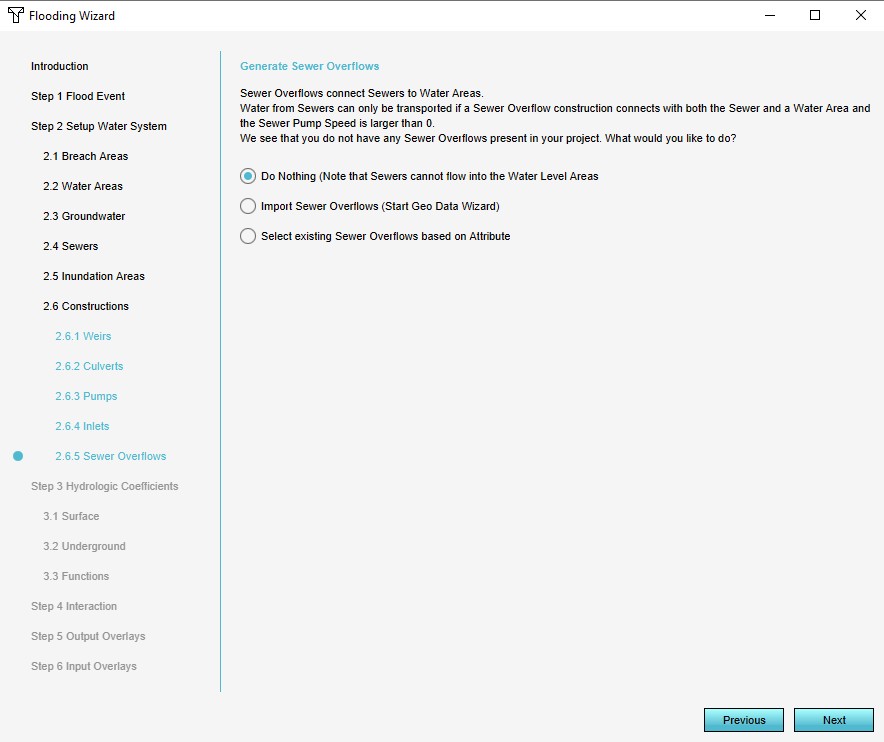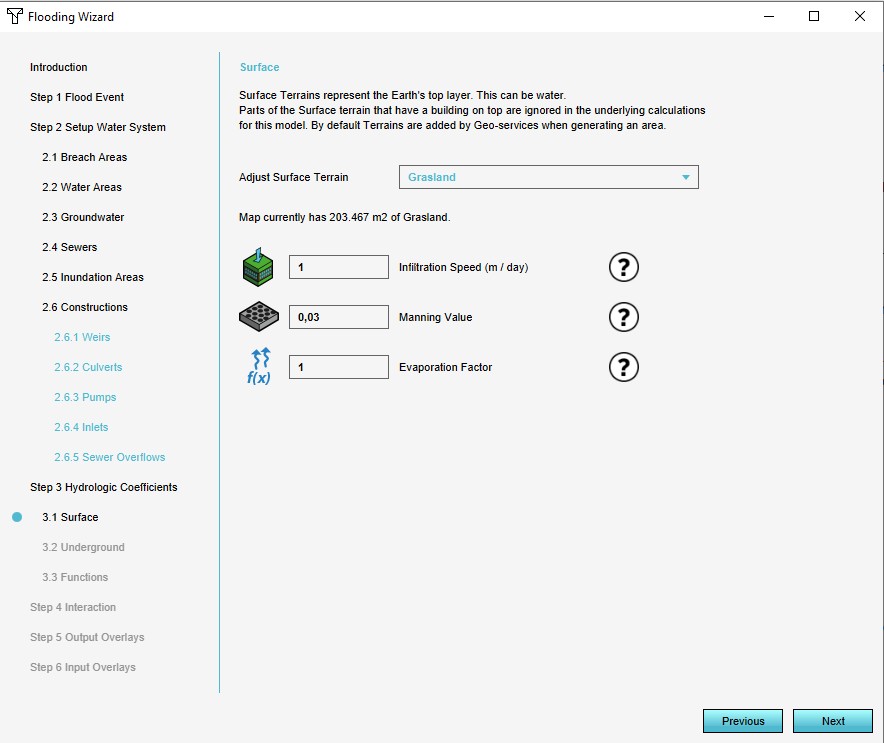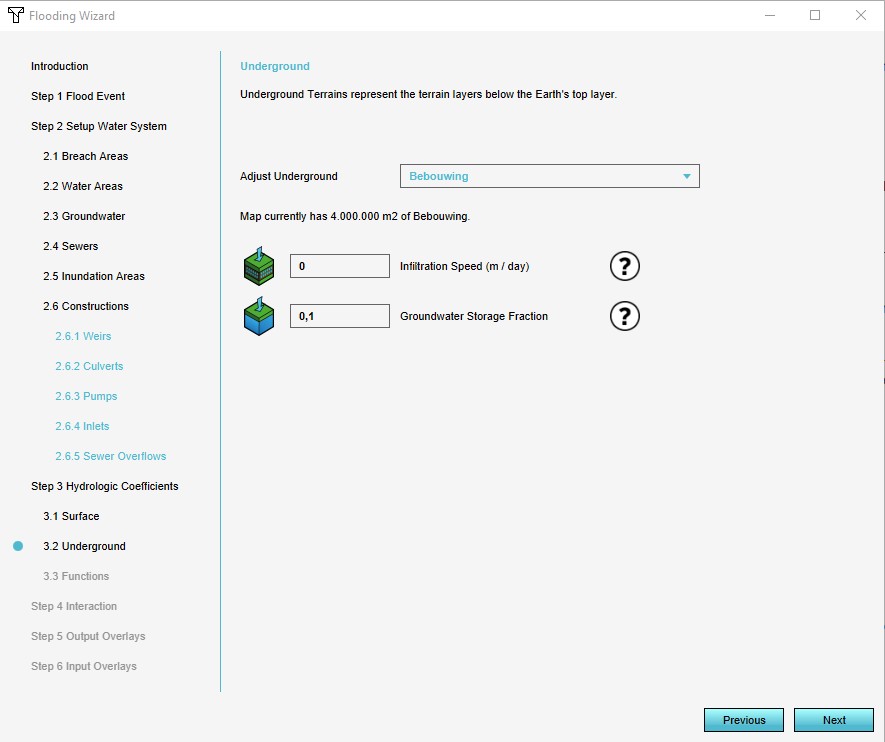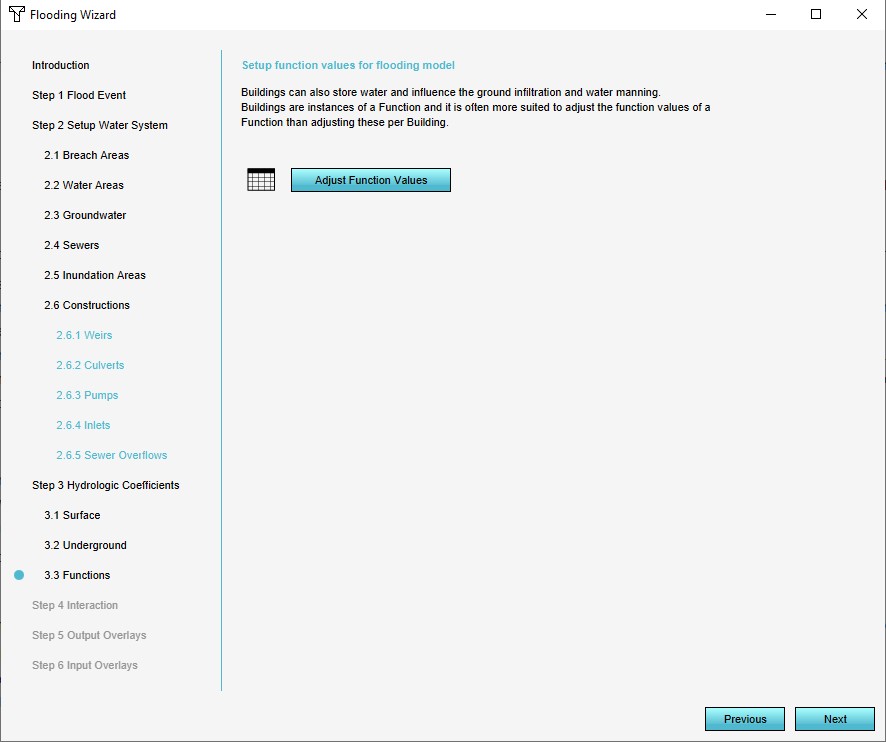Water Overlay Wizard: Difference between revisions
No edit summary |
No edit summary |
||
| Line 9: | Line 9: | ||
When the wizard has been completed once, it can be reopened at any time, and any step can be accessed anew.<br clear=all> | When the wizard has been completed once, it can be reopened at any time, and any step can be accessed anew.<br clear=all> | ||
===Step 1: Weather=== | |||
[[File:GroundWaterOverlayWeatherEvent1.jpg|thumb|200px|Step 1: Weather event]] | [[File:GroundWaterOverlayWeatherEvent1.jpg|thumb|200px|Step 1: Weather event]] | ||
The [[Weather|weather event]] defines the total simulation time and the weather and climate effects during the simulation. Specifically, the amount of rain and when it falls during the simulation, as well as the evaporation which takes place.<br clear=all> | The [[Weather|weather event]] defines the total simulation time and the weather and climate effects during the simulation. Specifically, the amount of rain and when it falls during the simulation, as well as the evaporation which takes place.<br clear=all> | ||
===Step 2: Water system=== | |||
[[File:FloodingOverlaySetUpWaterSystem1.jpg|thumb|200px|Step 2: Setup Water System]] | [[File:FloodingOverlaySetUpWaterSystem1.jpg|thumb|200px|Step 2: Setup Water System]] | ||
The water system is the most complex step of the configuration and contains a multitude of substeps to configure all geographical data. Its various components can be configured in the following order: | The water system is the most complex step of the configuration and contains a multitude of substeps to configure all geographical data. Its various components can be configured in the following order: | ||
| Line 44: | Line 44: | ||
</gallery><br clear=all> | </gallery><br clear=all> | ||
===Step 3: Hydrological coefficients=== | |||
[[File:FloodingOverlayHydrologiCoefficients1.jpg|thumb|200px|Step 3: Hydrological coefficients]] | [[File:FloodingOverlayHydrologiCoefficients1.jpg|thumb|200px|Step 3: Hydrological coefficients]] | ||
Hydrological coefficients are values of existing elements of the world, specifically {{inlink|lcase=1|Terrain}} and {{inlink|Miscellaneous hydrological properties of constructions|constructions}}. The coefficients dictate the ability of water to flow between cells and layers. The following data can be configured: | Hydrological coefficients are values of existing elements of the world, specifically {{inlink|lcase=1|Terrain}} and {{inlink|Miscellaneous hydrological properties of constructions|constructions}}. The coefficients dictate the ability of water to flow between cells and layers. The following data can be configured: | ||
| Line 56: | Line 56: | ||
</gallery><br clear=all> | </gallery><br clear=all> | ||
===Step 4: Interaction=== | |||
The wizard provides a few options to automatically generate methods of interaction with the hydrological model. The {{inlink|lcase=1|System visualization}} can be activated or deactivated. Additionally, for some hydrological constructions and features panels can be generated which allow for their most important attributes during a [[session]].<!-- | The wizard provides a few options to automatically generate methods of interaction with the hydrological model. The {{inlink|lcase=1|System visualization}} can be activated or deactivated. Additionally, for some hydrological constructions and features panels can be generated which allow for their most important attributes during a [[session]].<!-- | ||
: '''System visualisation''': | : '''System visualisation''': | ||
| Line 62: | Line 62: | ||
--> | --> | ||
===Step 5: Output overlays=== | |||
Multiple {{inlink|lcase=1|Result type}}s are available. In the wizard multiple result types can be selected. One result type (indicated with the "First" checkbox) will be the main overlay's result type. The other selections will become {{inlink|lcase=1|Result child overlays}}. Relevant attributes can be modified as well, if they are related to selected result types. | Multiple {{inlink|lcase=1|Result type}}s are available. In the wizard multiple result types can be selected. One result type (indicated with the "First" checkbox) will be the main overlay's result type. The other selections will become {{inlink|lcase=1|Result child overlays}}. Relevant attributes can be modified as well, if they are related to selected result types. | ||
Finally, the {{inlink|TIMEFRAMES}} attribute can be configured here as well, defining the amount of result snapshots which should be made during the calculation. | Finally, the {{inlink|TIMEFRAMES}} attribute can be configured here as well, defining the amount of result snapshots which should be made during the calculation. | ||
===Step 6: Input overlays=== | |||
To gain more insight into the data used by the model, you may opt to add one or more {{inlink|lcase=1|Input overlay}}s as well. These add [[Average Overlay]]s configured for the geographical display of attribute values relevant for the calculation of the water model. | To gain more insight into the data used by the model, you may opt to add one or more {{inlink|lcase=1|Input overlay}}s as well. These add [[Average Overlay]]s configured for the geographical display of attribute values relevant for the calculation of the water model. | ||
Revision as of 12:04, 12 April 2019

The configuration wizard is a special interface which helps to guide the configuration of the overlay. Across multiple steps, it progresses through each type of Data which can be configured, along with the most important attributes of the overlay.
Each of the water overlay variants has a configuration wizard which helps the user with configuring the overlay. The general structure of the wizard is the same for all variants, with the exception that for flooding overlays a step for configuring a breach area is included as well.
When the wizard has been completed once, it can be reopened at any time, and any step can be accessed anew.
Step 1: Weather
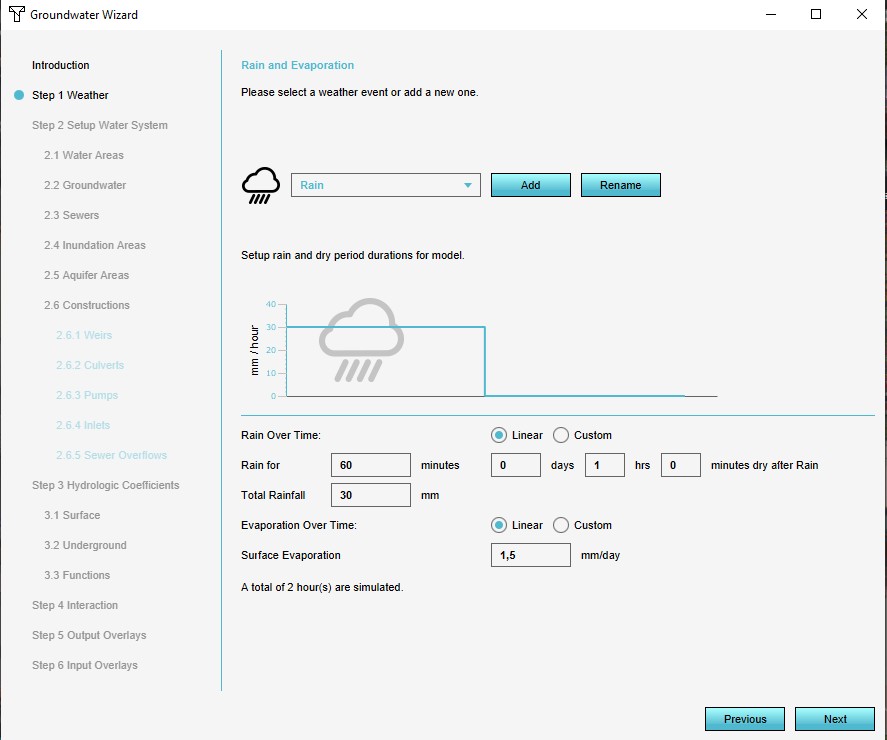
The weather event defines the total simulation time and the weather and climate effects during the simulation. Specifically, the amount of rain and when it falls during the simulation, as well as the evaporation which takes place.
Step 2: Water system
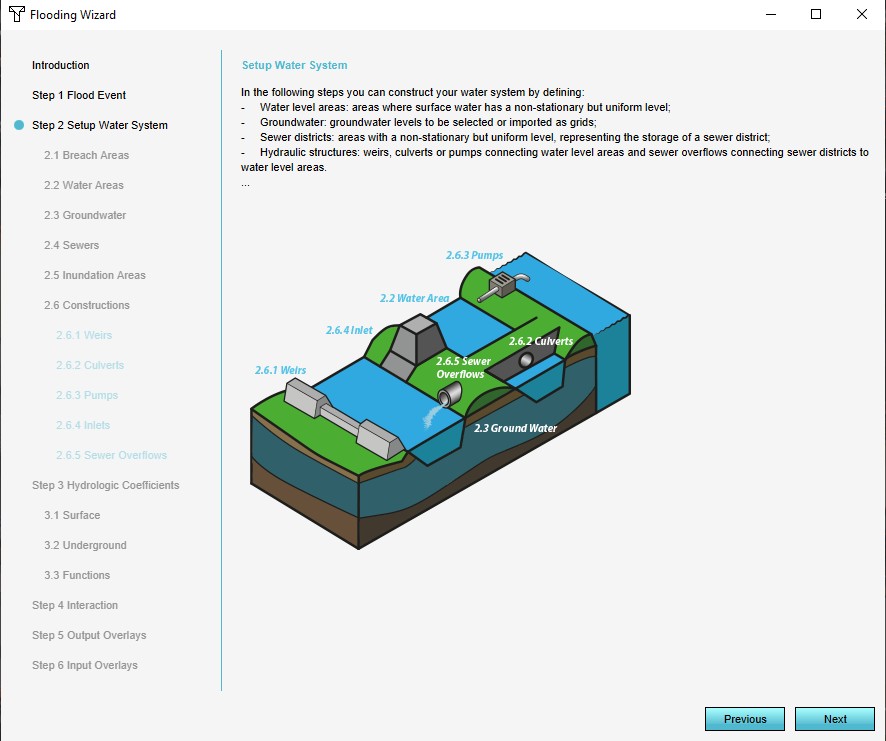
The water system is the most complex step of the configuration and contains a multitude of substeps to configure all geographical data. Its various components can be configured in the following order:
- Breach (flooding overlays only): A breach area, a location where an (uncontrolled) inflow of water takes places.
- Water areas: Water level areas, defined regions in which a specific water level is maintained. It is also possible to have the wizard generate a single water level area for the entire project area.
- Ground water: Ground water, the height of the underground saturated by water relative to datum. A GeoTIFF can be imported.
- Sewers: Sewer areas, the broad definitions for where what kind of sewers exist. It is also possible to have the wizard generate sewer areas based on the neighborhoods in the project area.
- Inundation areas: Inundation areas, definitions of water on the surface, in the form of inundated land. It is also possible to have the wizard generate a single inundation area covering the entire project area.
- Aquifer areas (groundwater overlays only): Aquifer areas, definitions for transmissivity or hydraulic conductivity of the underground layer.
- Weirs: Weirs, minor barriers in the water flow.
- Culverts: Culverts, tunnels which form direct connections between two locations.
- Pumps: Pumps, structures which move water from a lower to a higher location.
- Inlets: Inlets, structures which add or remove water.
- Sewer overflows: Sewer overflows, points where water from sewers can flow back onto the surface.
All of the above components can be imported or connected to the hydrological model.
-
Breach Area
-
Water Areas
-
Ground Water
-
Sewers
-
Inundation Areas
-
Aquifer Areas
-
Weirs
-
Culverts
-
Pumps
-
Inlets
-
Sewer Overflows
Step 3: Hydrological coefficients
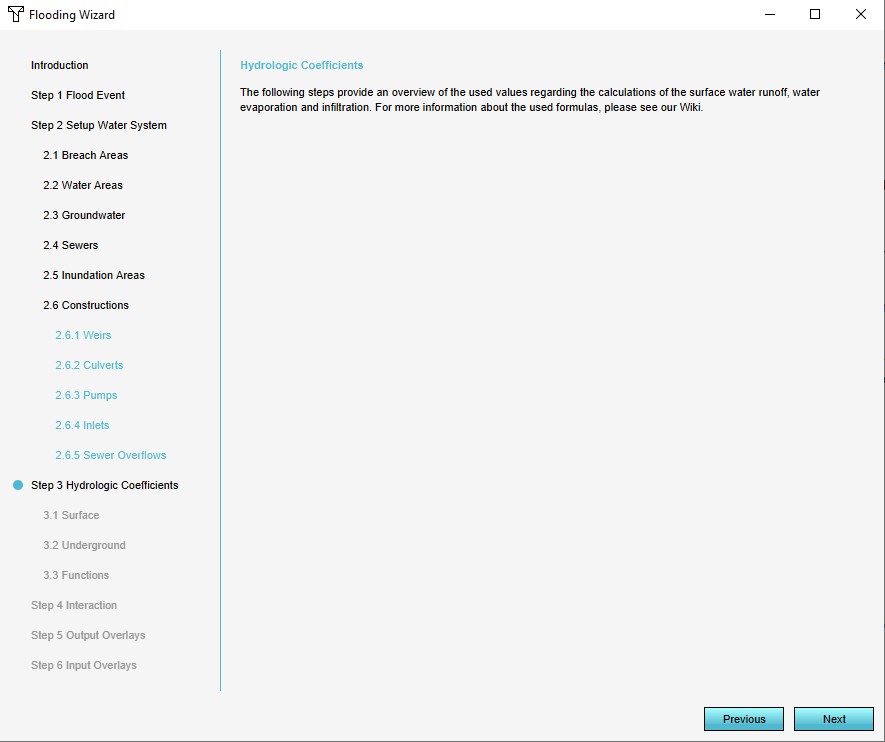
Hydrological coefficients are values of existing elements of the world, specifically terrain and constructions. The coefficients dictate the ability of water to flow between cells and layers. The following data can be configured:
- Surface terrain: For the surface terrains, attributes can be adjusted directly.
- Underground terrain: For the underground terrains, attributes can be adjusted directly as well.
- Constructions: For constructions, the wizard links to the function values editing screen, and will open it the "WATER" filter for the values to display.
-
Surface terrain
-
Underground terrain
-
Constructions
Step 4: Interaction
The wizard provides a few options to automatically generate methods of interaction with the hydrological model. The system visualization can be activated or deactivated. Additionally, for some hydrological constructions and features panels can be generated which allow for their most important attributes during a session.
Step 5: Output overlays
Multiple result types are available. In the wizard multiple result types can be selected. One result type (indicated with the "First" checkbox) will be the main overlay's result type. The other selections will become result child overlays. Relevant attributes can be modified as well, if they are related to selected result types.
Finally, the TIMEFRAMES attribute can be configured here as well, defining the amount of result snapshots which should be made during the calculation.
Step 6: Input overlays
To gain more insight into the data used by the model, you may opt to add one or more input overlays as well. These add Average Overlays configured for the geographical display of attribute values relevant for the calculation of the water model.
